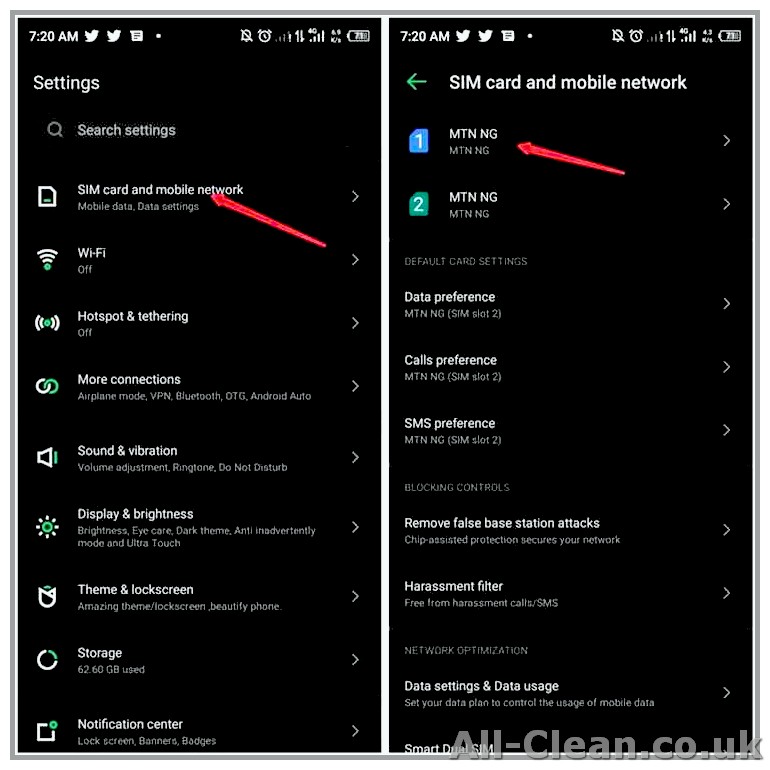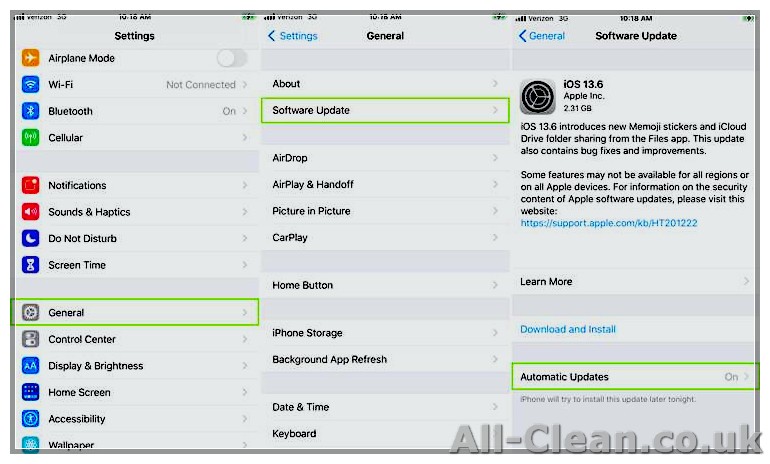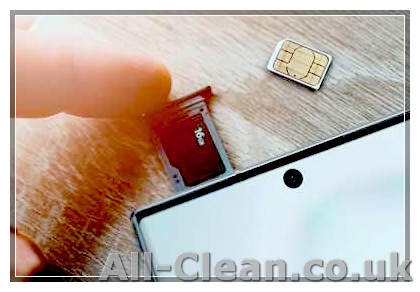
If you’re a smartphone user and your phone’s SIM card is not working properly, you may be wondering what you can do to get it back up and running. There are several common problems that can cause a SIM card to stop working, including a dirty or damaged SIM card, software issues, or a problem with your carrier. In this guide, we will show you seven effective methods to fix a non-functional SIM card in your phone.
One of the most important things you can do if your SIM card is not working is to try cleaning it. Over time, dust and debris can accumulate on the SIM card, preventing it from making proper contact with your phone. To clean your SIM card, you can try gently wiping it with a soft cloth or using a can of compressed air to remove any dust or residue. Be sure to do this carefully and safely, as any damage to the SIM card can render it useless.
If cleaning the SIM card doesn’t solve the problem, you can try removing the SIM card from your phone and inserting it again. Sometimes, simply taking the SIM card out and putting it back in can help establish a better connection. Make sure to power off your phone before removing the SIM card, and remember to insert it back in the correct way. You can also try inserting the SIM card into another phone to see if it works there.
If cleaning and reinserting the SIM card doesn’t fix the issue, you can try toggling the airplane mode on your phone. This can sometimes help reset the network connection and resolve any issues with the SIM card. Simply go to your phone’s settings, find the airplane mode toggle, and turn it on and off. Once you’ve done this, check if the SIM card is working again.
Another solution you can try is to update the software on your phone. Sometimes, outdated software can cause compatibility issues with the SIM card. Check if there are any available updates for your phone’s operating system, and if so, install them. This can often solve software-related problems and get your SIM card working again.
If none of these methods work, you may need to contact your carrier or phone provider for further assistance. They can help troubleshoot the issue and provide solutions specific to your network and phone model. You can reach out to them through their customer support hotline, online chat, or social media platforms like Twitter. You might also consider visiting a phone store for professional repair services if necessary.
In conclusion, a non-functional SIM card can be a frustrating problem to deal with, but there are several effective methods you can try to fix it. From cleaning and reinserting the SIM card to toggling airplane mode and updating your phone’s software, there are many steps you can take to resolve the issue. If all else fails, don’t hesitate to reach out to your carrier or seek professional repair services. With a little patience and troubleshooting, you’ll soon have your phone up and running smoothly again.
Restart your phone

To fix non-functional SIM card problems, one of the simplest and most commonly recommended solutions is to restart your phone. Restarting your phone can help resolve many software-related issues that may be causing the SIM card to not work properly.
To restart your phone:
- Hold down the power button until the power menu appears on the screen.
- Tap on the “Restart” option.
- If your phone doesn’t have a restart option, you can also try turning it off completely and then turning it back on.
Restarting your phone allows it to go through a full power cycle, which can help refresh the system and clear any temporary glitches that might be affecting the SIM card functionality.
If the SIM card problem persists even after restarting your phone, you may need to try other troubleshooting methods mentioned in this guide.
Check SIM card compatibility

If your SIM card isn’t working or you’re experiencing issues with your phone’s network connection, it’s important to first check if your SIM card is compatible with your device. Some older phones or devices may not support newer SIM card technology, such as 4G.
To check your SIM card compatibility, follow these steps:
- Power down your device
- Locate the SIM card slot on your phone. This is usually located on the back or the side of the device.
- Using a SIM card removal tool or a paperclip, gently push into the small hole on the SIM card slot. This will release the SIM card tray.
- Remove the SIM card from the tray and check for any debris or residue. Wipe the SIM card clean with a soft cloth or tissue soaked in isopropyl alcohol if necessary.
- Inspect the SIM card slot for any dirt or debris. Use a clean cloth or an air blower to remove any dust or particles.
- Once the SIM card and slot are cleaned, reinstall the SIM card into the tray.
- Carefully insert the SIM card tray back into the device.
If your SIM card still doesn’t work after following these steps, it’s possible that your SIM card may be damaged or incompatible with your device. In this case, you may need to contact your carrier for a replacement SIM card or consider upgrading your device.
Remember, troubleshooting your SIM card compatibility is just one step in resolving network connection issues. If your SIM card is compatible and you’re still experiencing problems, be sure to check out our other guides for more ways to fix a non-functional SIM card in your phone.
Clean the SIM card
If your SIM card is not functioning properly, cleaning it can help resolve the issue. Here are the steps to clean your SIM card:
- Power off your mobile phone before removing the SIM card.
- Take out the SIM card tray using the appropriate tool provided with your smartphone.
- Gently remove the SIM card from the tray.
- Dampen a lint-free cloth or cotton swab with isopropyl alcohol or water. Make sure to squeeze out any excess liquid.
- Carefully wipe the gold contacts on both sides of the SIM card. Avoid using excessive force or rubbing too hard, as it may damage the card.
- If you have multiple SIM cards, repeat the cleaning steps for each card.
- Allow the SIM card to air-dry for a few seconds before reinserting it into the SIM card tray.
- Insert the SIM card tray back into your smartphone and power it on.
- Go to the settings menu of your device and check if the SIM card is now recognized. If it is, you should see the network icon showing the signal strength.
- If your SIM card is still not working, toggle Airplane mode on and off. This action can sometimes help re-establish the connection.
- If the SIM card error persists, you may need to try another SIM card to see if the issue lies with the card itself.
- Another option is to try using your SIM card in a different device, such as a friend’s smartphone or a 4G wireless router. This will help determine if the SIM card works on a different device.
- If none of the above steps resolves the issue, it is recommended to contact your mobile network provider for further assistance. They might be able to identify any network-related problems that are happening.
Check for SIM card damage

If you’re experiencing issues with your SIM card, it’s important to first check if it’s physically damaged. Here are a few steps you can follow:
- Turn off your phone: Before you begin, make sure to completely power off your mobile device.
- Locate the SIM card slot: Depending on the make and model of your phone, the SIM card slot may be located on the side, top, or back of the device.
- Remove the SIM card: Use a SIM card removal tool or a paperclip to gently push into the small hole located near the SIM card slot. This will release the SIM card tray, allowing you to remove the SIM card from the phone.
- Inspect the SIM card: Carefully examine the SIM card for any visible signs of damage. Look for scratches, cracks, or chips. Pay attention to the gold contacts on the back of the card to ensure they’re clean and intact.
- Clean the SIM card: If the SIM card appears dirty or dusty, you can use a soft cloth or isopropyl alcohol wipe to gently clean it. Avoid using water, soap, or any other harsh chemicals.
- Check the SIM card slot: Take a moment to inspect the SIM card slot in your phone. Look for any debris or dust that may be obstructing the connection. You can use compressed air or a clean brush to remove any particles.
- Reinsert the SIM card: After thoroughly cleaning the SIM card and slot, carefully insert the SIM card back into the tray. Make sure it’s properly aligned and securely placed in the slot.
- Power on your phone: Once the SIM card is securely in place, turn on your phone and wait for it to fully boot up.
- Check for signal: After your phone is up and running, check if you’re receiving a signal and if the SIM card is recognized by your device.
- Test with another phone (optional): If you have another compatible phone, you can try inserting the SIM card into that device to see if it works. This will help determine if the issue is with the SIM card itself or with your phone.
If you’ve followed the steps above and are still experiencing SIM card issues, it’s recommended to contact your wireless carrier for further assistance. They can help identify any software or network-related problems that may be causing the non-functionality of your SIM card.
Update your phone’s software
If your SIM card is not working on your Android phone, one troubleshooting step that you can apply is to update your phone’s software. Here’s a guide on how to do it:
- Check if your phone is connected to the internet. Make sure you are in an area with a strong and stable internet connection.
- Go to the settings of your Android phone. You can usually find the settings icon in the app drawer or on the home screen.
- Scroll down and tap on “About phone” or “About device”.
- In the “About phone” menu, look for an option like “Software update” or “System update”. Tap on it.
- Your phone will check for updates. If there is an available update, follow the on-screen instructions to download and install it.
- Once the update is complete, restart your phone.
- After the restart, check if your SIM card is now working. If it is still not working, proceed to other troubleshooting methods.
Updating your phone’s software can sometimes fix issues with the SIM card. Software updates often include bug fixes and improvements that can resolve compatibility problems with SIM cards.
Reset network settings
If your SIM card is not working properly and you are experiencing network issues, resetting your network settings can often help resolve the problem. This method is easy to perform and can be done on both Android and iOS devices.
Here are the steps to reset the network settings:
- First, go to the Settings menu on your phone.
- Scroll down and click on “System” or “General”.
- Find and select the “Reset” option.
- Within the reset options, look for “Reset network settings” or a similar option.
- Click on it and confirm the action.
This will wipe all network settings on your device, including your Wi-Fi passwords and Bluetooth connections. It will not delete any of your data or contacts.
After the reset, your phone will restart and the network settings will be set back to their default values. This can help clear any configuration errors that may be preventing your SIM card from functioning properly.
If the issue persists after the reset, there may be another underlying problem. It is recommended to contact your service provider for further troubleshooting or consider trying some of the other methods mentioned above.








